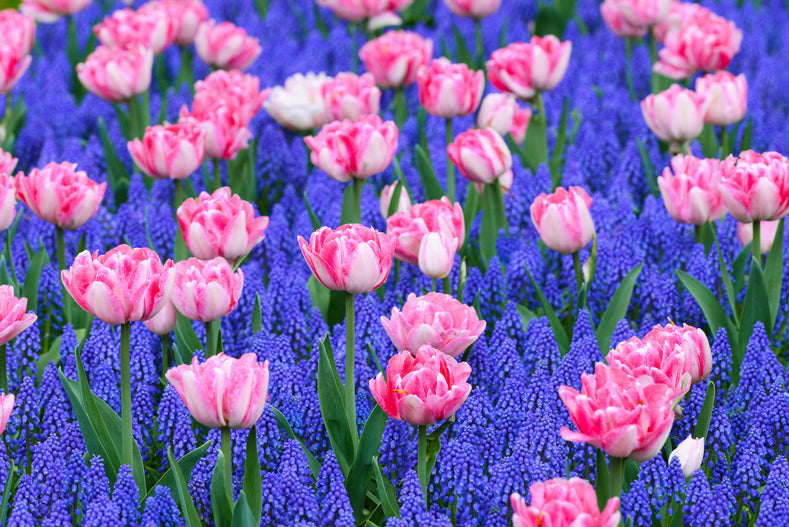The Perfect Spring Flower Bulb Garden
If you’ve ever admired a spring bulb garden, you may be wondering what the ‘secret’ is, but there are no secrets. Gardening with bulbs is really quite easy. It’s just a matter of good planning and common sense. However, if you’re new to bulb gardening, we can save you from a few common errors that most people have to make before they learn how to get it right.
Understand your garden
How do plants grow? They need sunlight, water and nutrients from the soil. Too much or too little of anything can be a disaster. Nutrients are probably the least of your concerns, especially when it comes to bulbs. Everything the plant needs to produce a perfect flower is already stored away inside the flower bulb. Light is an important question, though. How much sun or shade do different parts of your garden get? If they have sunshine for part of the day, is it morning or afternoon sun? If there is shade, is it light shade or deep shade? This will tell you what bulbs you could plant in different areas of your garden. Most of them, for example tulips and daffodils, will do equally well in sun or light shade. If you live in a hot climate, some light afternoon shade is a good thing, but if you live in a cooler area, your bulbs will enjoy the extra sunshine in the afternoons.
Start with the soil
Water and drainage are also important issues. With a few exceptions, most bulbs don’t like having ‘wet feet’, so a soil that is permanently water-logged won’t do. Except in extreme cases, you can usually improve drainage by preparing your soil with lots of compost. If it’s a lost cause, Leucojums will tolerate wet soils.
Choose high quality bulbs
Getting a ‘bargain’ on bulbs may turn into an expensive lesson in futility. Preparing a bulb for perfect blooming means it has to be exactly the right size and disease free. Some unscrupulous growers will offload sub-standard or virus infected bulbs onto the market for a song, usually in unbranded packaging. Garden shops will often mark down their bulbs when it starts becoming too late to plant them. Unfortunately, the ‘too late’ part might give you a few problems. Some of the bulbs may have died, and even if they’re still alive, they will have lost much of their vigor. Gardeners often think they’re getting a great buy, only to find that the bulbs don’t deliver the goods when flowering time comes around. Beware of ‘cheap’ bulbs. There’s always a reason why they’re so cheap.
Choose a succession of bloom times
Plan your garden as if spring consisted of three seasons: early, middle and late. That way, you’ll have exciting new flowers coming through over the whole spring season instead of producing a riot of color that’s quickly over.

Mass plant
With so many fabulous species, varieties and colors to choose from, it’s hardly surprising that you’ll feel like a kid in a candy shop when confronted by a bulb catalog. Resist the temptation of getting a little bit of everything. For the most striking bulb gardens, choose a color scheme and plant masses or at least groups of bulbs together, so instead of having lonely daffodils dotted around, you get a clump of daffodils that really stands out. The same goes for all other bulb species and varieties.
Choose the right depth and spacing – and plant right side up
Now that your soil is ready and you know what goes where, it’s time to start planting. A lot of beginner gardeners don’t bother with the planting instructions. It’s a bulb, they reason, so putting it in the ground is good enough. But planting your bulbs at the right depth and spacing – and the right way up is essential. Use a bulb auger to get your planting holes exactly the right depth. A measured piece of string can help you with spacing, and usually, the pointy side of the bulb must face upwards. Anemones are the exception, and odd-looking ranunculus bulbs need to be planted with their ‘claws’ facing downwards. If you’re really not sure what side is up, plant them on their sides.
Just add water and a little patience
Are you excited about the spring garden you’ve just planted? You’ll have to wait a few months before your flowers appear, but when they do, you’ll have the perfect spring bulb garden. Enjoy it!


